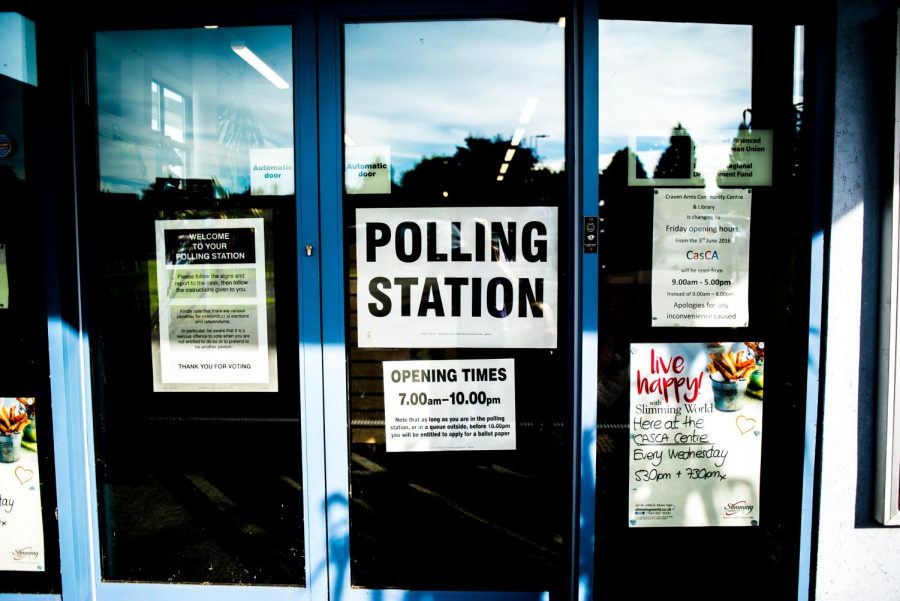Will I Be Allowed to Vote?
Republicans are targeting college students and young voters in new voter suppression laws, a direct attack on democracy.
Since the voting age was lowered from 21 to 18 in 1972, youth turnout has always been lower than that of older voters, until 2018. “I think that politicians start to get nervous when they see, in 2018 for example, that the young people’s turnout was a lot higher,” Julie Ebenstein, senior staff attorney for the ACLU, told ‘Rolling Stone Magazine.’
Stacey Abrams and other voting rights activists have nationalized the conversation around how voter suppression laws disproportionately affect people of color; the necessary next conversation is how voter suppression laws directly target young voters and college students.
Voter suppression laws come in many different types of limitations, and can be tricky to catch. Many of these laws restrict certain IDs as valid, cut voting times, make polls less accessible, limit voter registration, include residency requirements, and justify voter roll purges. Republican legislators have been targeting younger voters that overwhelmingly lean to the left, especially since 2013 when the Supreme Court decision of Shelby County vs. Holder weakened the Voting Rights Act, effectively removing federal involvement when questioning state voting laws.
The most recent surge of over 250 new laws came after the 2018 midterms, when 31% of 18-29 year olds voted, a huge increase from their estimated 21% turnout in 2014. The percentage of college students who voted more than doubled from 19% to 40.3% in the same time span. This wave of young voters tipped many close elections in battleground states in favor of democrats.
Michael McDonald, a political scientist at the University of Florida, wrote that the bills are “the greatest roll back of voting rights in this country since the Jim Crow era.”
In Texas, republicans responded to the unexpected turnout by immediately passing a legislation that requires all polling places to stay open for the entire twelve day early voting period. This forces mobile polling stations and campus polling places, where many college students vote, to close. Texas also prevented students from registering to vote until two months before their eighteenth birthday.
Texas is not the only state where it has become increasingly difficult to vote as a young person; the predominantly red Tennessee bans out-of-state drivers licenses and does not accept student IDs as valid identification for voting. In Wisconsin, a photo ID is required, if someone cannot obtain the required form of ID, there is a complicated petition process to get temporary identification, for which which many young people and out of state students might not even be aware. In 2014 Florida’s republican secretary of state outlawed all early voting sites at state universities. This ban was overturned in 2018, but reinstated in 2020 with the rule that all early voting sites must have ‘sufficient non-permitted parking’ which is rarely available on crowded campuses.
New Hampshire’s youth voter suppression fight has been waged since 1972, when the state government required voters to have lived in New Hampshire for at least six months before being eligible to vote in the state (a law that was eventually struck down). In 2012, the speaker of the New Hampshire House of Representatives complained about college voters, who vote majority liberal, saying that they “just vote with their feelings,” and also tried to restrict the youth vote. His laws were, similarly, struck down.
Now, New Hampshire’s 2018 bill forces residents with out-of-state driver’s licenses to obtain a New Hampshire ID and to register their car in the state as proof of “domicile,” which is the place a person treats as their permanent residence.
“Voter suppression is a big issue here,” said Meredith Klepper, who graduated from Horace Greeley High School in 2020 and is a first year student at Washington University in St. Louis. “I feel like it is most impactful for young people who are not in college, though. I had to print out and mail the registration which many young people don’t necessarily have access to.”
The disenfranchisement of the youth vote is a scary and harmful attack on democracy. One tool that can be used to challenge voter suppression laws is the 26th amendment, which states, “Whatever right to vote a state creates — whether it involves polling hours, early voting, or vote-by-mail — must be extended to all voters without regard to their race, their sex, their payment of a tax … or their age.”
The For the People Act (H.R. 1), which has passed through the House of Representatives, is an effort to reform democracy and protect the people’s voting rights. The bill makes Election Day a holiday, creates national automatic voter registration, requires at least fifteen consecutive days of early voting, prohibits states from restricting vote-by-mail, and ends partisan gerrymandering, among many other reforms.
It is not surprising that republicans want to silence the voices of young people, who overwhelmingly vote democratic. Every single local, state, and federal election is critical, and every single person has the right to vote for their representatives. Nobody should be turned away at the polls for using a student ID or being unable to find an accessible polling place. The fight for youth suffrage began in the 1940s with the slogan “old enough to fight, old enough to vote.” The fight must continue now against unconstitutional restrictions and against those who silence the voice of the people.
“Voter suppression is a big issue here,” said Meredith Klepper, who graduated from Horace Greeley High School in 2020 and is a first year student at Washington University in St. Louis. “I feel like it is most impactful for young people who are not in college, though. I had to print out and mail the registration which many young people don’t necessarily have access to.”
Helen Stone is the Editor in Chief and Facebook Editor for 'The Science Survey.' She is interested in journalistic writing because she believes that a...

